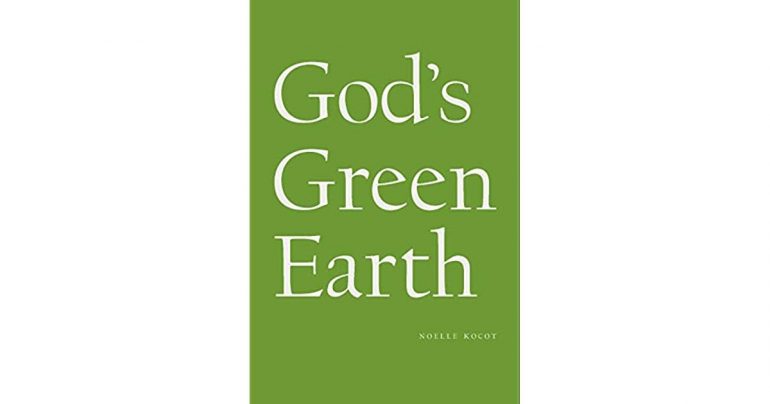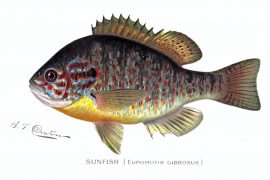Later, they’ll review that book, and
I’ll laugh at the makeout party beginning.
—Noelle Kocot, from “Socializing”
Tom Snarsky: How do you start a review of a book by a poet whose work you’ve loved for years? You and I have talked a bit, in the abstract, about what a “measured” poetry review might look like—how it could undulate between praise and appraisal, distancing itself just enough from that first, uncritical (or less-than-perfectly critical) encounter with a text to see how someone else might read it differently. And maybe we—you and I, right now, incorrigible Kocot stans both—can’t write that kind of review. Although I don’t exactly think contemporary poetry review culture is clamoring for harsh evaluations or anything on that wavelength, it feels right to acknowledge the fact that our existing feelings for Noelle’s work might not put us in the company of the least biased possible reviewers for God’s Green Earth. And maybe that’s an okay fact to start from.
Jo Ianni: The hope, maybe too hopeful, is that in showing our colours from the outset we might be allowed to enter this text, slowly denuding ourselves of those biases. Or, those biases might be our entrance fee to saying anything about God’s Green Earth. Although, our biases may not prove our biggest obstacle. We know well that Kocot’s work springs from a self-purported I-know-not-where. Kocot’s admission that her poetic resources for inspiration are completely random, spanning anything from a box of Tide to Gilgamesh, makes her work deftly particular and bafflingly mystical. In fact, this is why Kocot’s use of the sonnet seems for me like such an anchor. We mentioned this to each other as we moved through this collection, how you can almost tell a poem is a sonnet by the shape of its stanzas before any measurement. It’s one method in which Kocot’s randomness allows itself an attachment to the flows of history alongside an expansive mythic time and a seemingly detached temporality of everydayness.
TS: I love that, the sonnet as anchor—as William Bronk would say, “in the drift of the world.” The sonnet has always been an important form for Kocot, absolutely, and many of the poems in this book take that form (some of which were also previously published in the chapbooks Humanity and Sonnets, the latter of which will always be close to my heart because it was the book I was holding the first time I met my wife-to-be, Kristi, in person). A quote from one of the book’s several sonnets, “Paris,” shows a little of Kocot’s complicated relationship with form:
[…] The ordinary marvelous immersion,
Totally obedient to form was only a turn
Of the heavy neck on a current too blue for me.
It would be “too blue”, I think, for Kocot to restrict herself purely—in her words, to be “[t]otally obedient”—to the form of the sonnet. Like Bronk’s relationship to form, which I’ve tried to write about elsewhere, Kocot’s idiosyncratic version of formalism is a living one—the sonnet may give breath and shape to some poems for her, but it doesn’t for others, according to vicissitudes I think you are right to call “bafflingly mystical”. (Kocot has admitted many times, in interviews, a kind of naïveté about her own process, like when she says “I have a hell of a time trying to talk about my work because it is all so unconscious.”) What’s funny to me is, while Humanity and Sonnets felt fairly cohesive in their collective surreality (the poems in those chaps all seem to agree with each other in the wide net they cast over the non-topical), there are also moments of extraordinary directness and lucidity throughout God’s Green Earth—is this true for you too?
JI: Certainly, Kocot is direct in the way Ashbery can be direct, think “At North Farm” maybe, or his haiku. It’s that fine line where the surreal and indirect hits on a genuine chord, when it’s not seeking some strict correspondence with the “real.” The first poem in the collection, “The Work,” is a great example of this:
The Work
Inside a straight line,
There is solace.
In water,
There is a small gift.
The heart’s souvenirs
Pile up under the tongue.
It’s easy now
To do the work,
Always becoming
A scent on the path.
I think it’s also worth mentioning, in concert with your comment about the complexities of Kocot’s living formalism, that here we find a diverse array of those forms Kocot has worked with over her career. With some exceptions, this book can almost seem like a compilation or composite of her past poetry. Beyond the recurrence of sonnets, there is something in this collection’s “The Epic of Gilgamesh” that reminds me of the propulsion in “Poem for the End of Time” found in her 2006 collection of the same name. I want to draw specific attention to the one word lines of “Nostalgia,” a poem that would’ve fit perfectly in her 2016 collection, Phantom Pains of Madness (which I read front to back in one sitting at the Toronto Reference Library). It’s as if every word is given all the room to breathe itself whilst remaining part of a throughline. You could almost get stuck on a single word as if each were able to unlock the entire poem. I’m not sure how much more living a form can become than seemingly stopping to ponder itself at each word.
TS: Yes I’m so glad you brought up this poem and Kocot’s previous books! To me “The Work” is beautifully reminiscent of “Talk,” the poem that opens her 2013 collection Soul in Space (which, full disclosure, is one of my favorite books ever). They both feel like such concentrated ars poeticas that frame all that follows. Sort of like the keystone words you mention in her one-word-per-line poems, it’s tempting to me as a reader to linger on these opening poems as a way of starting to understand the books they begin; for instance, “Talk” ends with a three-line stanza that gently entreats the body, but also, in its way, the reader:
O my body,
Sit here with me
While I just talk.
(The earlier stanzas in “Talk” are all made up of a mix two-, three-, or four-syllable lines, but this concluding stanza—with its comparative plenitude of three four-syllable lines—is a first for the poem’s music, and a promise of the fullness of the collection that the reader is about to encounter.) I love the free, low-stakes way these lines invite the reader—and what is the poet, the speaker’s body, but her own first reader?—to wade through (cf. earlier in “Talk”: “My body [/] Is a little [/] Green sea”) the process of listening, especially given the density of images in Kocot’s poems. (Here’s a fun exercise: ask someone to read you a Kocot poem aloud then see what of it you remember afterwards, what little obliquities stick with you, stir your ear and mind.) “The Work” feels a little different from “Talk” in how deliberate its language is—the work is “easy,” sure, like the verb phrase “just talk” in “Talk,” but it is also “a straight line,” one that the poet seems like they need to traverse in order to make something happen. “The Work” made me think of something Kocot said in an interview with the poet Amy King after Soul in Space came out: when asked what she was working on at that time, Kocot replied, “Oh! I am working on writing nice and peaceful poems, complex, but ones which show the hard-won peace of mind I have now. No more monsters, just the love of the Creator, good people, animals.” This, to me, is a wonderful way of thinking about the work in “The Work,” and in God’s Green Earth more broadly—poems that are artifacts of the “straight line” of writing poetry (however “straight” it can really be said to be!), and finding as you go all the poem’s little haecceities, its unique solace.
JI: I think that “piece of mind” comes through. Moving from poems like “The Work” and the Epic of Gilgamesh to the culminating poems, “Advent,” “Compassion IV” and “God’s Green Earth.” These poems teem with lines that celebrate a sense of grace achieved:
“[…] you are all
Permission and flounce, and your stockings
Catch in the mere light. Perfection, wholeness
Is what I see now in everyone I touch”
Nevertheless, I think it’s important to mention that Kocot’s poetics are not altered by this shift. This strange straight line is still, seemingly, intact. I imagine it more like a moving line akin to that living formalism we spoke about. I get a sense of this ongoing grace in the following line:
“[…] Like my mother’s ring
I stay on the hand indefinitely.”
The hand swinging along, engaging in mundane doings, perhaps even in harm while the ring holds on. I focus here on how the ring’s staying is indefinite. The ring like that hard-won peace of mind can be lost. Its hold is uncertain. It’s in the very last lines of the book’s title poem that I feel most certain that this grace and ongoingness presents a sort of faith.
“See that blade of grass sprouting up
From a verb, the only one we have
Ever needed, and it is rightly called to love.”
And I read that as a response to both Whitman and Shakespeare.
TS: What a beautiful conclusion. That last adverb you quoted puts me in mind of these lines from a poem by Ariana Reines:
It seems to me every person
Wants a heart beating
At the root of the rightness
Of things
God’s Green Earth feels like Kocot averring that the rightness of things is right here, in our shared world, and that love is the fertile verb that will allow our hearts to cultivate it.





